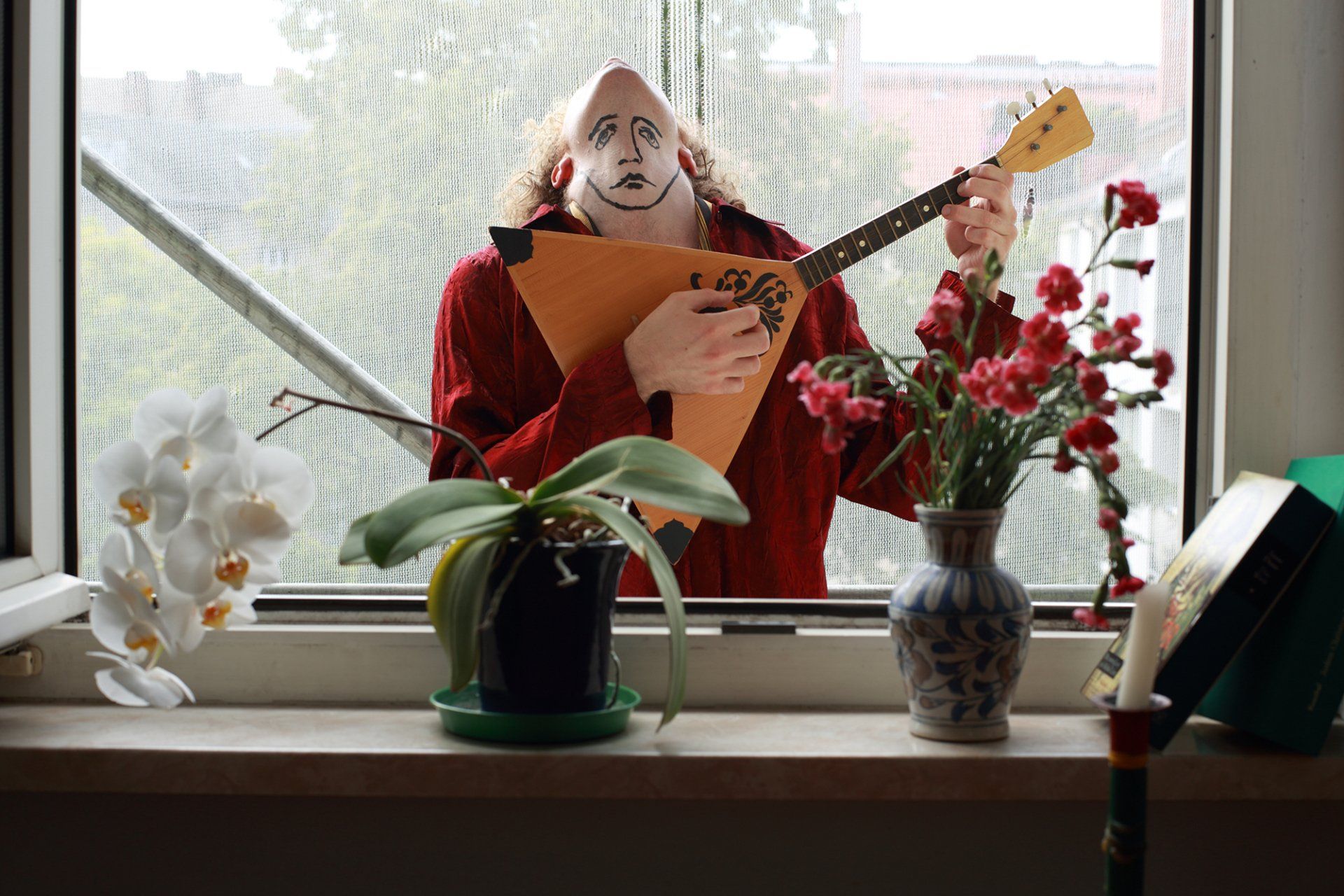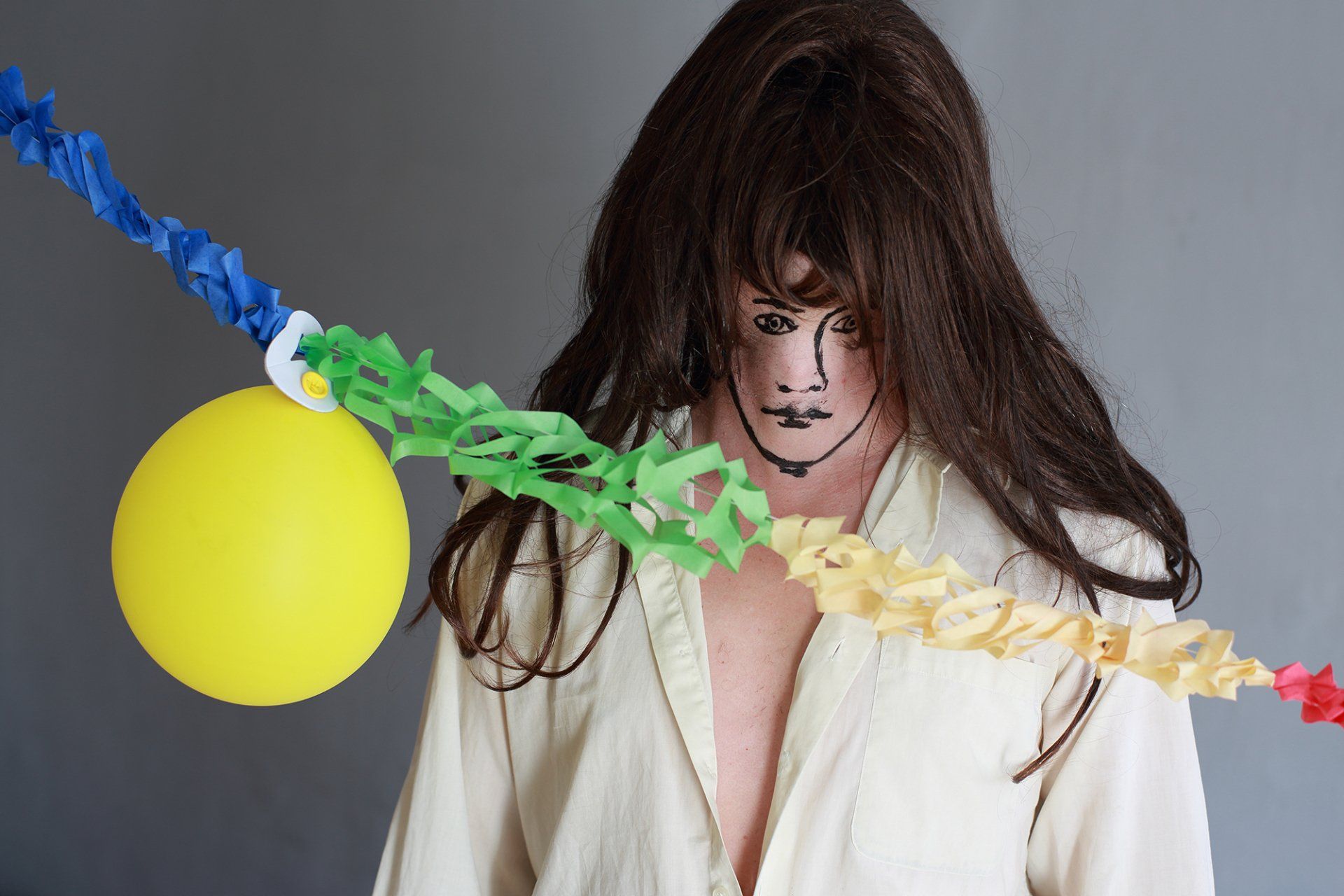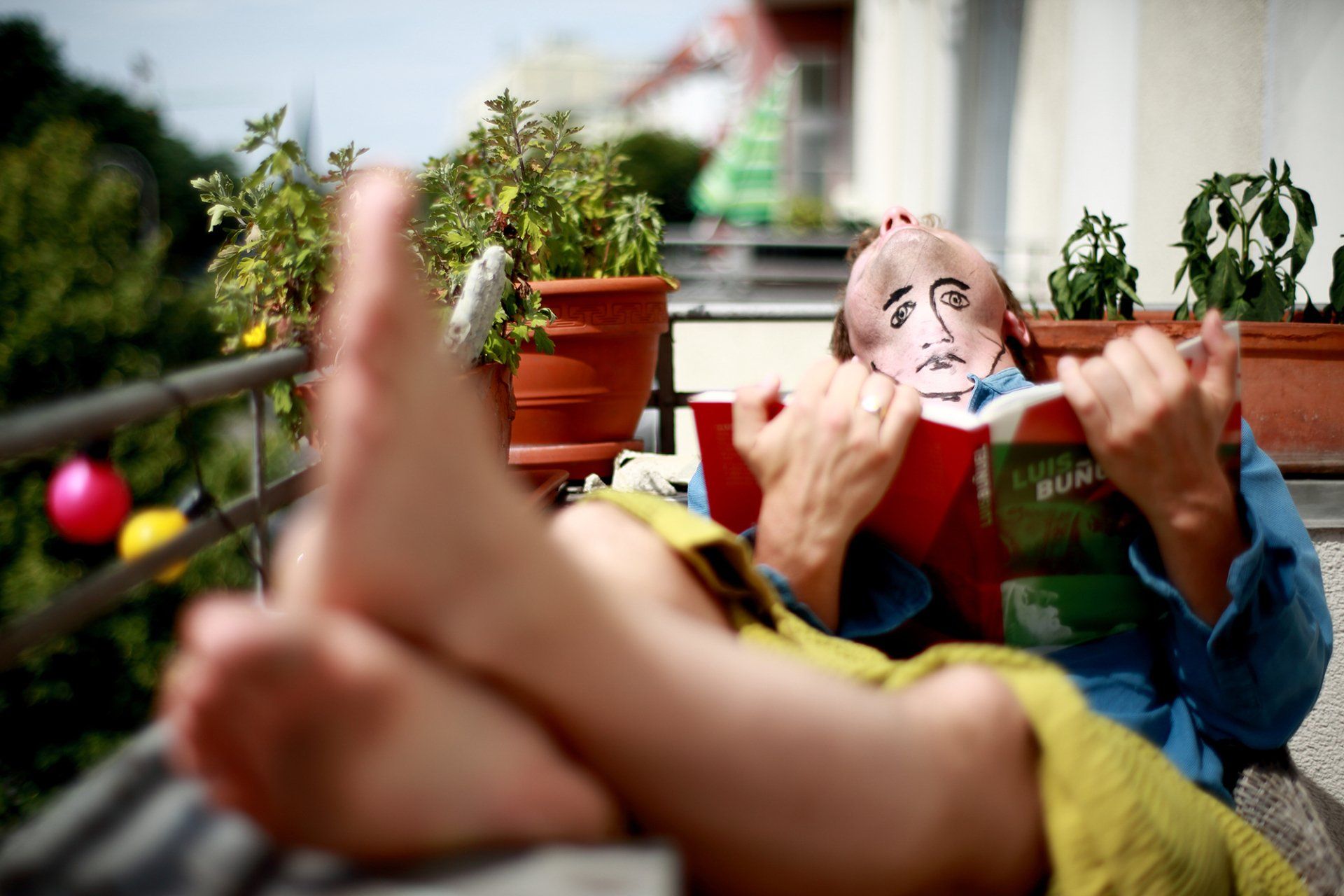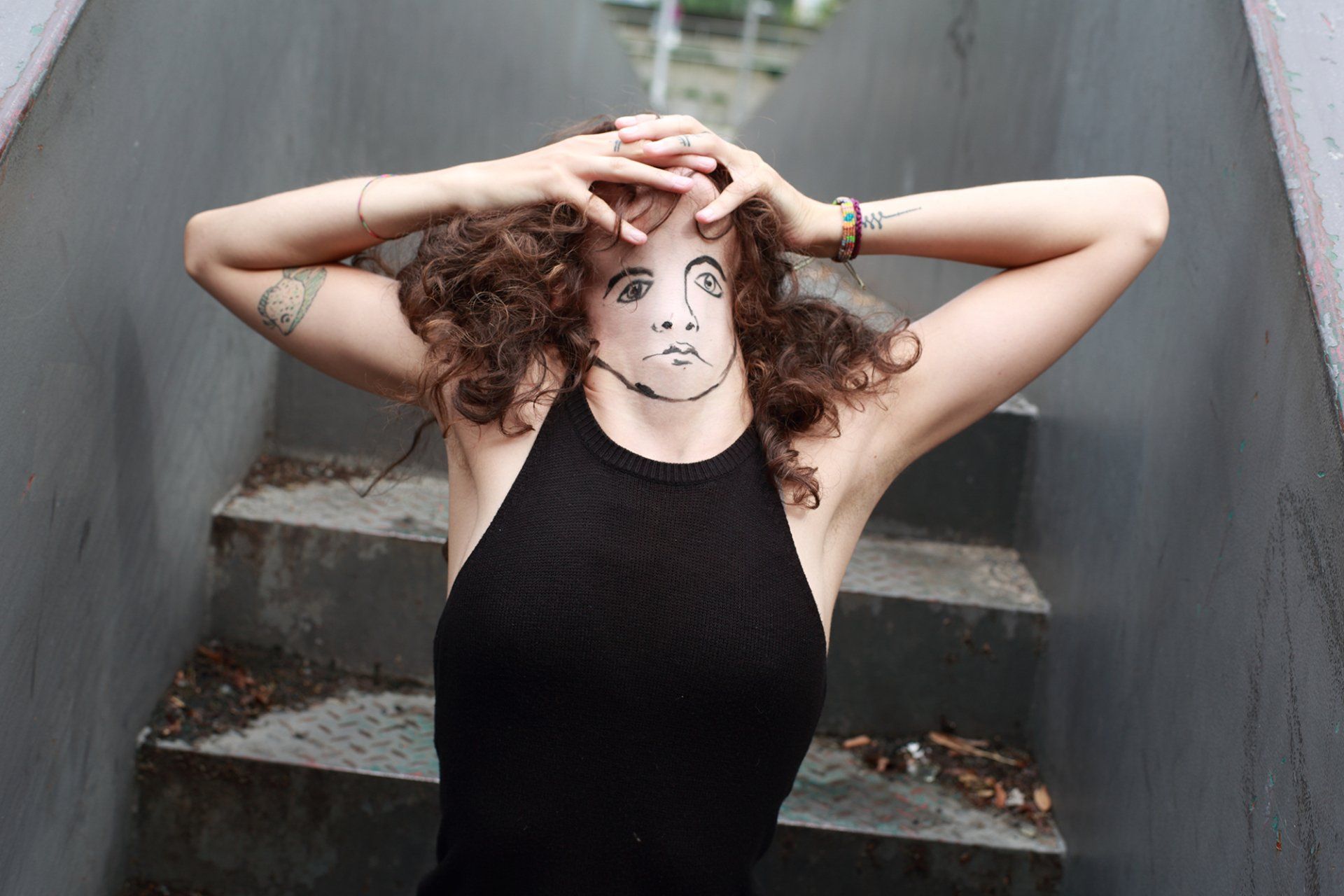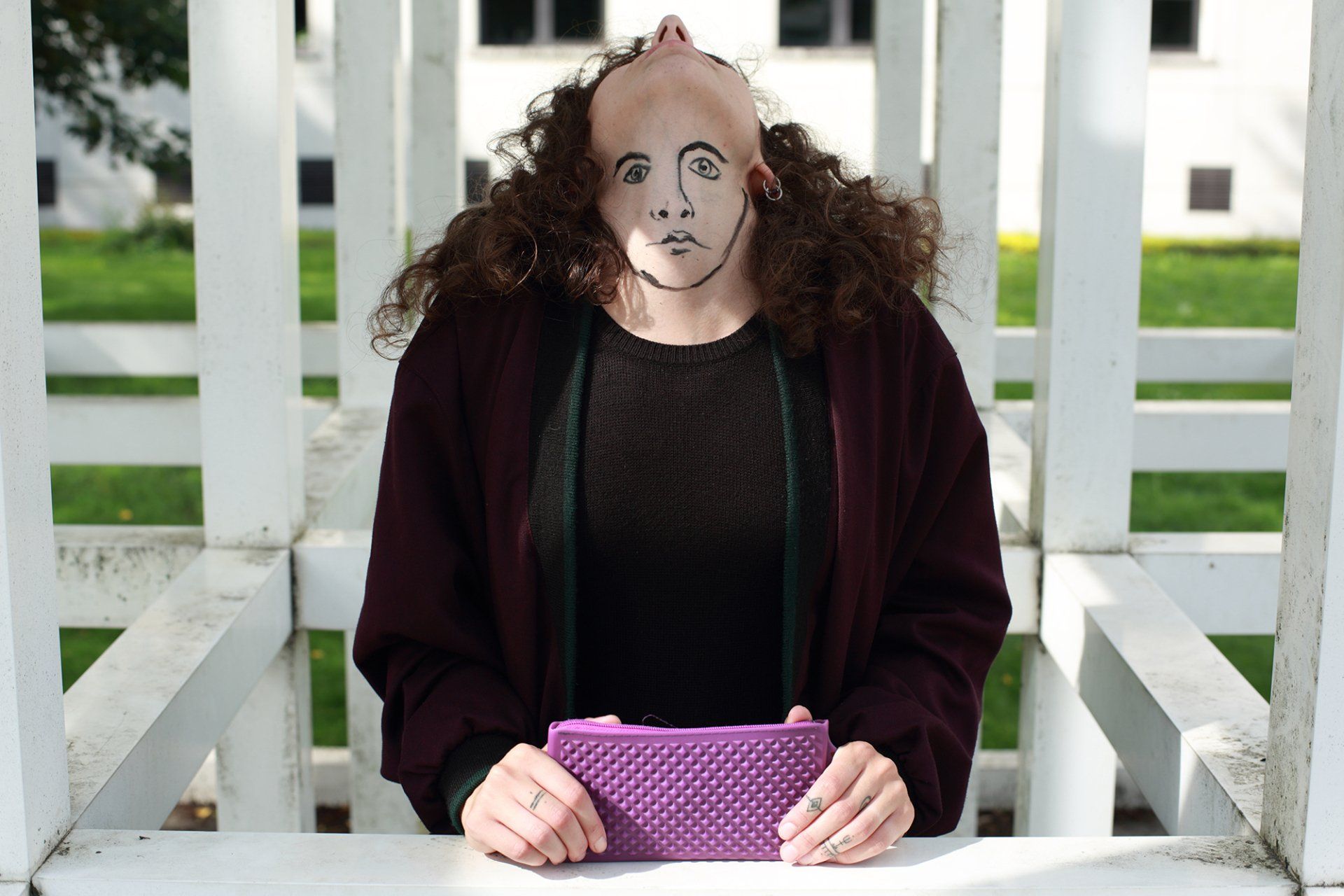
METAL magazine, interview with Sebastian Bieniek (B1EN1EK), 2017
"Many Faces of Everything"
Sebastian Bieniek is a collector of those bizarre things that don’t seem to fit into the world. Those things that somehow find themselves somewhere on the brink of earth, where nobody comes to claim them. That’s what he told me, but I had noticed it instantly. As he quotes The Sacrifice (1986) this “Very boring Andrei Tarkovsky movie made in Sweden”, Sebastian’s voice brightens up: “There’s this funny postman with a hobby – he collects all kinds of strange things that don't fit in the world. I love it! I’d say that my hobby is similar, I love to collect everything that has a ‘doppeldeutig’ in it.” In order to understand what exactly ‘doppeldeutig’ means to one of the most influential Berlin-based artists today, we have to set off on a journey with him. There might not be anything waiting for you – no prize, no trophy, no treasure – yet, Sebastian is uncontrollably positive: “There’s nothing to win!”
SEBASTIAN BIENIEK (B1EN1EK)
Words by Liucija Adomaite
That’s the point. Sebastian isn’t interested in status in the way that most mortals are, in the way that the art market is, or the way that young artists seem to be, as they lay dreaming on their bunk beds before their first day at art school. On the contrary, he speaks of 'losers' numerous times during our conversation. There’s this abnormal fascination with weirdoes, dropouts, outcasts, queers and provocateurs that we both share. As we speak, I realise that Sebastien Bieniek is a single version of his many faces today. Within his concept of 'doppeldeutig' – meaning 'double-faced' – meanings open up cinematically.
Liucija Adomaite: Hey, Sebastian. You were named one of most influential contemporary Berlin-based artists alive, how do you feel about that?
Sebastian Bieniek: Well if you ask the artist who he thinks is the best or the most influential artist, he has to answer that he himself is the best one, because if not, why he is doing it? You have to have a strong belief, not necessarily inside yourself, but surely it has to show on the outside. Because if not, why should anyone buy your work? No artist should advertise another artist, especially not in a situation where he needs to make a living. So there’s no single clean structure. Everywhere you go there’s a different view on art. If you ask a French person who the best artist in the world is, they’d say it’s Pierre Soulages. If you ask a German, they’ll say it’s Gerhard Richter. And for the British it’s Damien Hirst. Art is very egoistic in the same way that love is, because if you love somebody you want that person to adore you the most. In this there is no compromise. It’s like when the artist is in the early stage of his career, he believes he’s a genius. Look at them when they go to art school, they believe they’re better than Picasso, better than anyone. This energy is nice, you know. But year after year you start running out of money, time and everything else, so you are forced to compromise much more.
LA: Did you feel this way in the beginning of your career too? Like you said, when the artist has to think of himself as the best – and because we were all naïve and did exactly that back in art school – and then the ones who keep this idea throughout their careers actually become better than the rest...
SB: Well, there’s no objective way to measure if art is good or not. Two artists in two different times and two different places of the world who don't know each other can make the same black square and it looks identical; which happens in fact very often. It happened with The Beatles. On three occasions in Australia, Spain and England The Beatles made the same melody. In the end, just one become successful and there’s always the question why. People believe that art is something with a magical power just like religion or love. Stories make things beautiful, and you need to have one, even in the field of art. I am fascinated by them and I want to analyse them, but it gets really hard because it has some kind of mechanism behind it. Like the artwork in the auctions at Sotheby’s or Christies, if they're selling contemporary art from a living artist, there always have to be galleries, artists and collectors, and they have to bid. When you sell a piece of artwork at Christies for fifty million and you’re alive, every newspaper in the world will write that "Sebastian Bieniek sold the piece for 50 million dollars". It allows the price to increase even further because the artist is becoming more established. Then, people will no longer look at the work; they will look at the number.
LA: Numbers are truly dangerous. Your piece Bird Shit on 4 Square Meters Gold (2013) presented in the queue of artists waiting to showcase their work outside the Deutsche Bank Kunsthalle – a bank being a very symbol of numbers – kind of illustrated that danger zone. It seems that you were always drawn to protest as a form of statement art. When it comes to the art market, one can instantly feel that there’s this love and hate relationship between you. How do you see it?
SB: I think that the art market has nothing to do with art. It’s like a poker game. You can play poker on stock, but you can also play poker on the art market. But in that case, you don’t play for art, you play to win. So the art that is very high in price is similar to the cards that belong to people who play poker.
LA: So there’s not much of a soul, really...
SB: Yes. It’s complicated. Let me put it like this – nobody knows the artist who sold for the best price in the 19th century. The artists that we know today are actually the losers. They are the ones who didn’t sell.
LA: Sure, the outcasts, the drop-outs from the salon…
SB: Yeah, but art history doesn’t change in a year. You need time to change it.
LA: Your work spectrum is so eclectic and spread throughout different artistic media and formats, that it becomes quite a challenge to get to the core of who you are as an artist and as a person. Could you describe yourself to make it clearer for our readers?
SB: Usually when people visit my studio, they look around and say, “Oh, everything’s so different, but it has something in common; your work is all connected”. I'm often jumping from one subject to another, but it makes sense. I'm not looking for something beautiful, some perfect composition. I feel like I'm going through the world and I want to uncover it. In order to find out how to make the ideas visible, I need to set up a dramaturgy. If you have a linear narration like a movie, it gets boring. Sometimes you need to jump into another view. For example, when you look at Federico Fellini's movies, you see that he jumps very often and I love it. From the first glimpse it may not look natural but if you get into it, it starts to have a rhythm, just like music. I love the scene from one of his movies where a little boy is dancing with a fat lady on the beach. It’s so absurd, but at the same time quite beautiful. From my point of view, it’s very natural, because life itself is made out of these unconnected things. Now you're talking with me, later you’ll meet your friends and will eat pork ears and, I don’t know. But you need these fields, even if they’re very different, to describe your personality. One shouldn’t be one-dimensional, but two or three-dimensional. My work process starts from the feeling inside my stomach that tells me I have to do this even if it doesn’t make any sense. After I make the work and start writing and talking about it, it sounds like a perfect plan.
LA: Does the plan always put everything in place for you?
SB: I never know what I'm going to make, unless I'm making a series of some painting or a picture with multiple variations. I could make twenty paintings with bird shit on gold, you know, every shit looking a bit different. Shit might be a little on the left or on the right, but it would be boring and in fact, that wouldn’t be new. But if you take a very famous artist, like Pollock or Rothko, who I’d say made very similar artwork at the time – of course size and colour are different – it’s the same structure, same movement, nothing new. When I make a series, I finish it within a month or maximum a year. I make enough of it, then the project has to be over before I get bored of myself. I need to go to a new era to refresh. When the personal connection is lost, the work becomes untrue. Imagine adding very intense details to the story and the next day you have to do exactly the same thing.
LA: That would be a nightmare!
SB: Yes! And imagine you do this all over again everyday for a year. How that’d look after 365 days? It would be a prison. So we need to be in the present moment and not reproduce work, but to produce something new. In fact, the moment can’t be reproduced because there’s no such thing as the same moment. Reproduction is absolutely against it. I think I need to live in the present and to feel it. In a way, my art should be about the time in which we live: about economics, about the situation of the present day…
LA: Should it also be more political?
SB: Well, yes. But it doesn’t have to be political in a way, like for example, writing “Trump is stupid” on the canvas, because this is also stupid (laughs).
LA: ...and distasteful!
SB: Yes! In Germany there’s a saying that the door doesn’t fall into the apartment and it means that it doesn’t have to be so loud. It would be much more intellectual if you paint, let’s say, a flower and you do it in a way that everyone believes it has something to do with politics. In my book Realfake (2011) I wrote twenty pages just on the fact that in the media there’s no difference between fake and reality.
LA: Jean Baudrillard was talking a lot about this idea too.
SB: Yeah, and if you look at the situation around us, there’s ‘fake news’ everywhere. You have American fake news, German fake news, Russian fake news, everyone makes fake news. Maybe fake news is even more real than the real news, I don’t know. Maybe the reality is simply very boring. Like, you know, I sleep, I get up, I make love, I make myself a coffee, and then I go to the toilet.
LA: Right, everything’s just so down to earth when you see it like this.
SB: And you can’t make a headline out of it! Like “Sebastian Bieniek was in the shop and he bought a piece of bread”. Everybody needs a headline. Trump needs a headline. Merkel and Putin need headlines too. And it’s not just political propaganda; it’s the fact that we all need a headline. You need to sell reality to get attention, to make people listen to you. If there were to be no propaganda, no competition between the states, between people, newspapers, artists, you’d still feel the need to get attention
LA: Right. Think about it, when time is out of our hands and global despair is too much to handle, humour is the only thing we have left. It can easily be a tool to express things that are otherwise critical. Like how Saturday Night Live got away with mocking Donald Trump on national television on a weekly basis. They could have simply said “Trump is stupid” but actors don’t get awarded Emmys for that. When it comes to your work, there’s also this playful, humorous, sometimes slightly sarcastic side. Does the humour enable you or do you take it for granted?
SB: Humour is instinctive to me. It comes like déjà vu. I always try to find an interesting view. When I was in China, I was shocked that they didn’t know irony until the last century or something. There was a huge portrait of a Chinese writer and apparently, they said that he was so famous because he brought irony to the country. What?! You didn’t know irony before? It’s so strange. Then I have to be more careful about what I say. Humour is the strongest weapon and it hits. When someone laughs it means you got him (laughs). On the other hand, you have these intellectual artworks, for example monochrome paintings. And I'm like “Well you have a shitty life, man; you just made a plain black canvas. And I mean Jesus has seen the sun and stuff, and all you have is a black painting” (laughs). I have a friend who loves Malevich' black square but I really don't believe in that. It's just a simple square (laughs).
LA: It’s not easy to find people who love Malevich’s square, I've almost given up on it! (laughs).
SB: They really exist! There are more stories of work like this one every year and they write books about these pieces of nothing. I can’t imagine the people who read these books. The only thing I could really imagine is a kind of sex story behind that black square, and because it couldn’t be shown at the time, it was painted over.
LA: What extravagant censorship that would be.
SB: Well, censorship is complicated. I come from the East block, Poland, and I know a lot of people, even here in Germany, who talk about censorship not because it’s true, but because it’s cool. It’s mainstream. If you’re an artist from the East block and want to be important, you have to be censored. It’s the same with Ai Weiwei who I think is a joke. He has a drop of blood on a hat and he makes a billion photographs of it. It’s totally absurd. Perhaps a toilet is also political to him. The funny thing is that some artists make political art about bad guys and then they sell it back to those bad guys. A lot of artwork that criticises capitalism belongs to the private collections of the most capitalist people on earth. Or let’s say, in Berlin there’s this bar called Grill Royal and you pay a hundred euros for a meal, but there’s a capitalist critic quoted on the entrance. How does that fit together?! I also see a lot of young artists who are all left and criticising capitalism, but at the same time they’re wearing Gucci and Yves Saint Laurent.
LA: They probably don’t count the clothes into the bill.
SB: I think that those people perceive capitalism as a symbol. It’s like a brand to them. When you’re young all that matters is what kind of music you enjoy and what kind of brands you collect. And they recognise each other by their brands. So anti-capitalism in this sense is just another brand.
LA: Like Apple or Beats or Starbucks...
SB: Yes!
LA: Let’s get back to your art. Your early career marks a stage of very extreme and radical performance art supervised by Marina Abramović. For Hand Without a Body (1999) you cut your arm for 16 days straight and for Born Be Boulette (1999) you lay in a pool of raw meat. You also direct films and have worked alongside Hungarian film director Béla Tarr. How did this shift towards a more conceptual, self-sustaining and even minimal approach to art happen?
SB: Well I’ve made conceptual art for seventeen years now, but not that frequently, because you just can't push it. If I push it, it gets stupid. I had a request last week for a quote which starts with the word ‘Artists’ and I didn’t answer that magazine, but they kept asking. But I cannot push it! I just cannot! I CAN’T!
LA: Sure, nobody likes being pushed. How did you arrive at your face-paint series?
SB: I wanted to combine photography with drawing on the face. So I painted a black square over my face in 2012, but it didn’t get a lot of attention. I tried to work with the idea, but everything looked stupid. Then, one day my son was at my place, and at the time in 2013 he was six years old, and he had to go to school. So I woke him up in the morning and said you have to go to school and he was like “No”. I was like “Why not?”, but he replied “I cannot move!”. I said, “Don’t joke with me, how can't you move!” And he said he had an ache. So I called his mother to ask what was happening and she said that children sometimes get these growing pains, when, for example, they grow too fast. So I said okay, “Don’t go, Bela, if you don’t want to”. He was sitting on a chair and his face was extremely tragic and sad. So I asked if I could draw a smile on his face and he agreed. I drew the smile and took a picture of it, and said “Look here, you’re smiling, you can smile!” After, I decided to make a series of it. I really liked this German word ‘doppeldeutig’. It refers to the boxing ring where a few hundred years ago it would have a second layer under the top one, so that they could hide very expensive stuff underneath the ring. It became a metaphor. If something has two meanings it is ‘doppeldeutig,’ because you have the first layer which seems to be very obvious and natural but if you look twice you’ll see a second layer which has a completely different meaning. I love this mechanism. I love paintings like this, sentences like this. In the end, the entire world is ‘doppeldeutig.’ And so I needed to find a translation for ‘doppeldeutig’ in English and ‘double-faced’ sounded good. When I made this double-faced series, the Internet started to put narrations to it, like “The story of a double-faced girl in Berlin” to which I was like "Okay, whatever". But I don’t know how it got so successful.
LA: The whole idea of ‘doppeldeutig’ opens up many layers of meaning, real or imaginative, but when it comes to faces it seems to be a whole different story. When the ‘doppeldeutig’ mechanism sets onto the actual human body, the subject becomes somehow unsettling, unnerving, kind of frightening. Why might having two faces be such a gruesome idea to people?
SB: It’s a very interesting question. I think it has to do with the eyes. When it comes to eyes, I get a strong feeling that sometimes I’d like to be invisible. But among many other people I feel visible. Two days ago I was observing ten Russian men who live on the street. When it comes to poor people, alcoholics and so on, passers by never look at them and they become invisible. What happened was that suddenly one of these men started looking back at me like from a Hitchcock movie. And I’m sure that he saw me among all those people just because I saw him. If you look at someone, the other person feels it instantly even if you’re not looking back into their eyes.
LA: Maybe the act of looking at someone or being looked at is the proof that you exist. The face is inevitably connected with the whole notion of human identity. But the thing that I find interesting is that the eyes don’t get old even when the body does, they remain the same. I mean, they can lose some features like eyesight or whatever, but they can’t lose themselves. But if the face is part of human identity as we’re used to believing, then what happens if there’s no face. Can a faceless identity exist?
SB: No, I don’t think that’s possible. Even when you look at a stone, at a certain point you’ll see the face inside it. Or when you look at the toilet for long enough, after a certain point you’ll start seeing a face. It doesn’t have to be a real one, but you’ll see it everywhere. But I think it’s not the fact of seeing the face, but the fact of who is watching whom and the act of looking that is actually a weapon. What’s funny to me is that twenty years ago people didn’t have smartphones and now if you’re arguing with someone, you have a phone to do the job for you, like “That’s it, I’m calling you!” When someone is having a fight on the street, people take out their phones and start filming. People are looking at each other with this artificial eye. But by using this camera to film someone, they’re actually hunting you. And the people who are being hunted, the ones who are filmed, they want to respond by looking back. But if you don’t know how to look back anymore, you’re lost. It’s the same with the double-face: when you have two faces you can’t look at both of them simultaneously. One face is firing at you and you’re looking back in defence, but that second one is firing at you from behind. That’s why it’s so scary.
LA: Your recent project Underface joined the BieniekFace oeuvre. This time the face is down the neck and the result is somehow… peaceful? One might even get the idea that it already belongs there in contrast to the Double-face series where two faces on top of the real one makes the result rather uncomfortable to look at. With Underface you get a weird sense of balance.
“Twenty years ago people didn’t have smartphones and now if you’re arguing with someone, you have a phone to do the job for you. People are looking at each other with this artificial eye. But by using this camera to film someone, they’re actually hunting you. And the people who are being hunted, the ones who are filmed, they want to respond by looking back. If you don’t know how to look back anymore, you’re lost.”
SB: It’s very interesting that it looks like it should be there, even though we know that it isn't. You’re right; it’s less scary, because you know where the face actually is. In double-face photographs this question is unsolved and this leads to the conflict between the observer and the object. In that sense, Underface presents a clear situation.
LA: You’ve been in the art scene for so long and have had so many different characters. Yet in this recent video called Becoming the Winner you claim it out loud. I mean, maybe you are already a winner?
SB: There’s something really fascinating and deep about winning. People that win are not really winners, they’re the losers. It’s true, but it’s not logical. When at the end of his career Napoleon wasn’t strong enough, he was still winning. He didn’t have the energy to fight, but wanted to keep his status as Kaiser. So he met with the diplomat from Austria’s monarchy whose name was Metternich and they had a talk. They were negotiating who gets what and Metternich wrote down everything Napoleon said. One sentence is very interesting. At a certain point, Napoleon got angry and said: “Why don’t you give me what I want? I won one battle after another, but the King of Austria didn’t win a single one, he didn’t even fight, he simply left and run away. And now, after all my victories, this King comes back to his country and his palace, and everyone admires and loves him. He is the winner for you.” You can see the same thing happening with other characters throughout history. For sixteen years Hannibal from Cartagena won one battle after another while the Romans were losing, but in the end it was he who was the actual loser. It’s fascinating to see how these people who own the status of 'winner' didn’t even fight for it.
LA: So would you rather be the one who loses because that’s the real win?
SB: In the end, the winner doesn’t exist because there’s simply nothing to win. The most you can get is a headline, but there’s no prize. You can get a momentary place in the media, but if the media decides the winner, then it can also manipulate it. And if that’s all you get after ‘winning’, then it’s really very sad.
LA: And so we're back to where we started.
---
To see more photography by Sebastian Bieniek visit: www.SebastianBieniek.de
mail(at)bieniek.at
